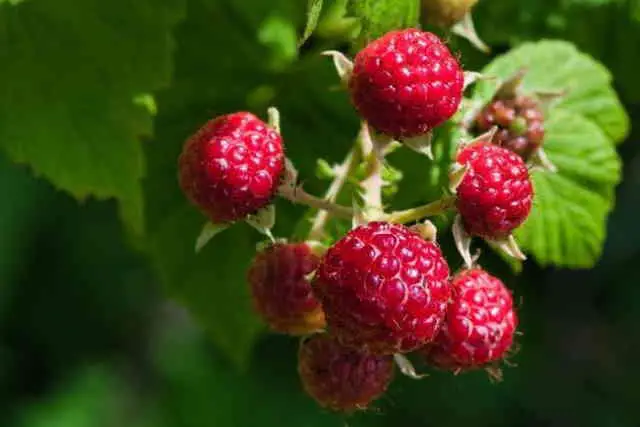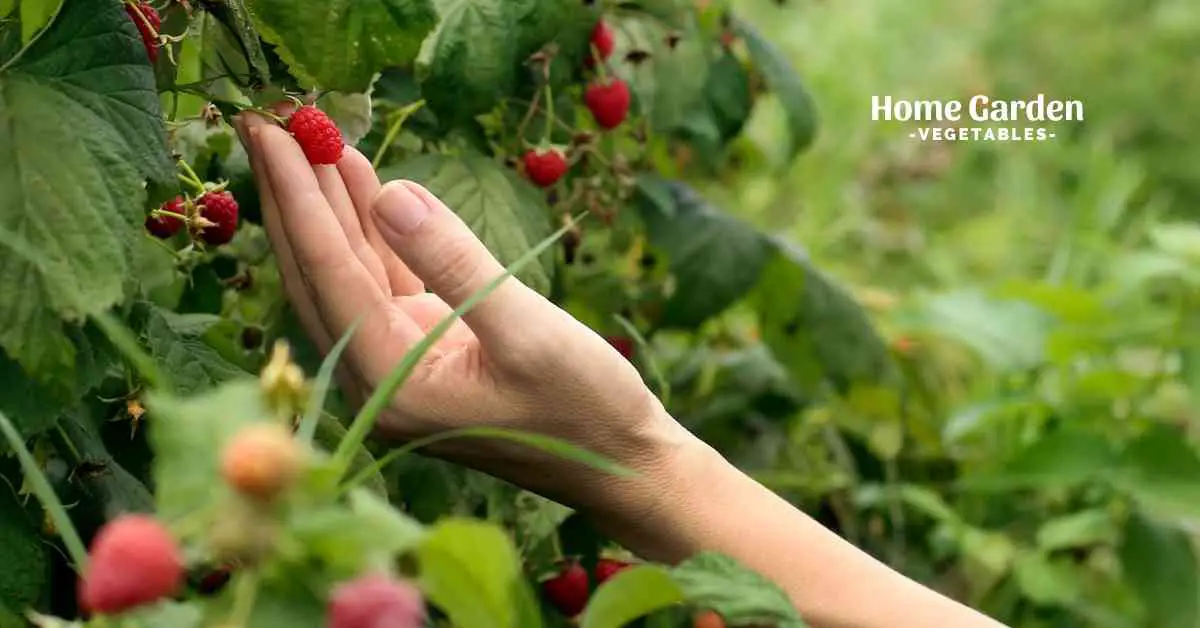Early July is traditionally the start of the raspberry growing season for many gardeners. Raspberry bushes are starting to bear their luscious, red berries, ready to be collected and devoured by humans whenever they are ripe. Even though nothing surpasses a bumper crop of ripe raspberry fruits, black spots may sometimes occur on your berries. This is an eyesore and makes you wonder whether or not your raspberries should be eaten at all.

What are Dark Spots?
Most likely a fungal or bacterial infection has killed or decayed the sections of your raspberries that are black. Toxins and proteins are produced when the infection first affects the raspberry bush and kills the plant’s immune system. As a consequence, the plant’s cells begin to die off, leaving the berries with black blotches.
Reader Poll: What online courses would interest you?
Concerns about Personal Safety:
Do black-spotted raspberries pose a health risk if eaten? Yes, that’s the quick answer. Raspberry black spots are the result of a bacterial or fungal infection that may affect a plant’s immune system but is safe for humans.
However, eating raspberries with black spots on them has the disadvantage of tasting bad. Even though eating raspberries with black spots means you’ll be eating rotted or dead sections of the fruit, that’s the only thing to be concerned about.
You shouldn’t have any problems eating raspberries as long as you wash them well before eating them. The true danger comes from dirt and debris on vegetables, which may contain dangerous germs like E. coli. It does apply to most fruits and vegetables, though. Providing you thoroughly clean your vegetables before storing them, you should be just fine.
Subscribe to our newsletter!
Raspberries that are discolored or decaying, on the other hand, are never a welcome sight. A properly treated and diagnosed raspberry bush, however, will not continue to produce fruit that is faulty in the future.
Bacterial and Fungal Infections
Discolored dots on raspberries, as well as other fruits and vegetables, are common when they’ve been infected with fungus. In the soil, weeds, and even flies and insects around your raspberries, harmful fungus may be found.
It’s not true that all fungi are harmful to your raspberry bushes. Certain fungi, like mycorrhizal fungi, may assist your garden plants’ roots absorb more nutrients from the soil, which is great news for your plants.
Certain fungi are beneficial to your raspberry bush; nevertheless, there are several that are destructive. Below are the more frequent fungal diseases that harm your raspberry bushes and cause the berries to develop black spots:
Cane Blight
A raspberry cane with blackened leaves, indicating the presence of Raspberry Cane Blight. There’s a fungus in there called Leptosphaeria coniothyrium that’s causing this sickness. It’s particularly bad for black raspberries because of the fungus that may infect them.
During the first year of development, cane blight can develop and become problematic. Raspberry cane wounds are harmed by it.
The fungus spreads throughout the plant’s vascular system as a result of this invasion. The infected cane survives in the winter and spores are discharged in the spring. Wet climates are ideal for these spores to flourish. Irrigation and rain splashing help spread the fungus’ spores to healthy canes.
New infections are caused when the spores germinate in existing wounds. Symptoms of cane blight will most likely occur in the autumn after the incision has healed. Peeling back the cane increases your chances of seeing cane blight.
If your raspberries develop vascular discoloration, you have cane blight. Infected lesions will have dark red patches with purple uneven edges and grey cores.
Withered canes have no buds or blossoms because of cane blight, which attacks them the second year after they’ve grown. Raspberries that are sunken and dark are another possibility. It’s not uncommon for them to resemble small peppercorns.
Treating Cane Blight and Keeping It Under Control
Start by avoiding wounds on your canes as much as possible if you do not want black patches on your raspberries. For those of you who pick your raspberries manually, this may be a challenge.
Make sure your raspberry plants are spaced properly as well. To help your garden seem better, pull out weeds as well. By doing this, you’ll improve the air quality and sunlight exposure for your plants. By doing this, the canes will be able to dry completely.
When the weather is moist, avoid trimming your raspberry bushes and avoid over-watering your plants. This will assist keep your plants dry and limit the spread of any cane blight spores that may be present.
Make sure your cleanliness is up to par to avoid bringing in any diseased plant material for the winter. If you’re worried about infection, don’t eat the blossoms after harvest. Instead, burn them and bury the ashes. Pruning any old canes is also a good idea.
Raspberry canes grow best between 3 and 4 feet tall. When your raspberries have grown to this height, it’s time to do some serious pruning. Do this if you know it will be dry for at least three days after you do it.
Pest control procedures should also be used. Wounds caused by insects like cane maggots and borers serve as entry routes for bacteria. You may avoid cane blight on your raspberries by planting varieties that are resistant to or tolerant of the disease.
Plants such as Nova, Julia, and Newburgh are well-known for their resistance to cane blight. To minimize stress, make sure your plants are adequately watered and nourished. It’s well known that stressed plants are more prone to fungal infection.
Early spring is an excellent time to apply a lime-sulfur solution to your lawn to help prevent a fungal attack. The buds should be no longer than half an inch in length.
Conclusion
You know why raspberries spoil, so let’s talk about ways to delay it. Use dry paper towels to absorb moisture if you like fresh raspberries. Store unwashed raspberries in the refrigerator. Always keep in mind that moisture is your worst enemy when it comes to this project. You may use frozen raspberries as a substitute for fresh ones if you discover that they deteriorate often as a result of not eating them quickly enough.

